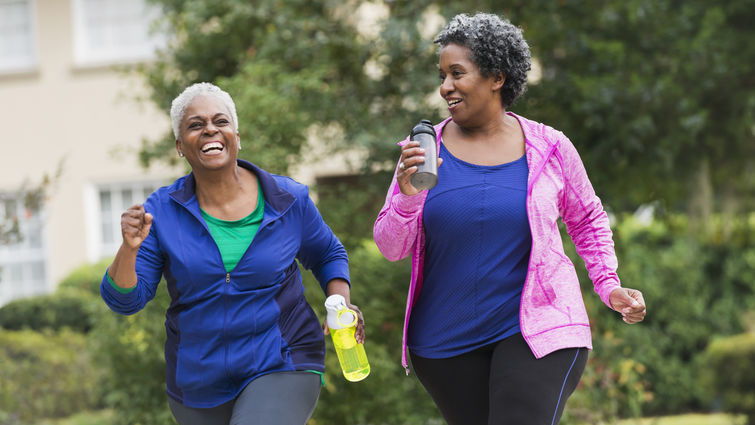
There is a 4-to-1 female-to-male ratio for the prevalence of osteoporosis because women lose 1 to 2% of their bone mass during the first five years of menopause, according to LLUH doctors.
Age, not enough physical activity, and long-term use of some medications increase the risk of osteoporosis. The seemingly solid makeup of bones are actually several holes, like a honeycomb. Osteoporosis occurs when the holes grow and cause a loss in bone density, leading bones to become weak and break easily. Anthony Essilfie, MD, orthopaedic surgeon and sports medicine physician, provides risks and tips for keeping bones strong.
Essilfie says there is a 4-to-1 female-to-male ratio for the prevalence of osteoporosis because women lose 1 to 2% of their bone mass during the first five years of menopause. Osteopenia and osteoporosis are continuums of decreased bone mass that leave the bone more brittle and susceptible to fractures, directly increasing the risk for menopausal women. Essilfie says the first sign of osteoporosis could be a wrist, hip, or spine fracture.
“It is never too late to give up on your bone health,” Essilfie says. “Follow these tips to combat and reverse the risks of osteoporosis.”
- Get a bone density test. Dual Energy Xray Absorptiometry (DEXA) scans reveal the lumbar spine to assess the bone marrow density and compare the score to the bone marrow density of a gender-matched 25-year-old. The test results will determine the diagnosis of osteopenia versus osteoporosis. Risk factors influence how often DEXA scans are received.
- Consume calcium and vitamin D. Good sources of calcium include low-fat milk and dairy products, dark green leafy vegetables, tofu, calcium-fortified juices and cereals, and vitamin D in milk and eggs. Essilfie recommends all patients older than 50 should get 1200 to 1500 mg per day of calcium and 800 to 1000 international units of vitamin D.
- Engage in weight-bearing exercise. Sedentary lifestyles could exacerbate osteoporosis. Examples of active lifestyles include walking, gardening, climbing stairs, tennis, and weight training.
- Avoid smoking. Smoking cessation is advised for those who smoke tobacco. Studies conclude that smoking increases the lifetime risk of hip fracture by about half.
- Discuss medicine with your provider. Several medications are available to help prevent or treat osteoporosis, including bisphosphonate medication to decrease the rate of bone loss. Ask your provider what’s right for you.
Loma Linda University Health’s orthopaedic providers offer a range of treatments to get you back to living a healthy, active life. From hand surgery to trauma cases, spine care to joint replacement, our team is committed to finding the best treatment path for you. Learn more at https://lluh.org/orthopaedics.
